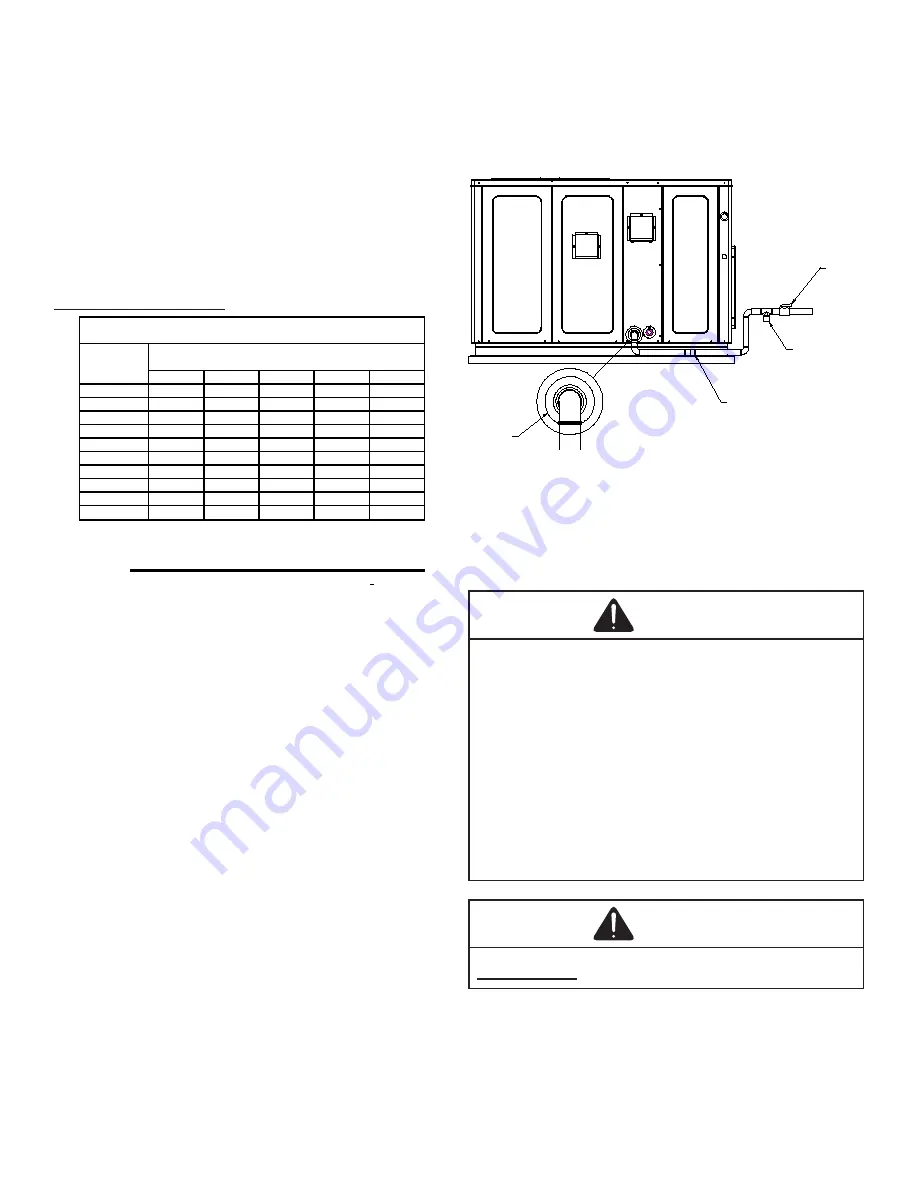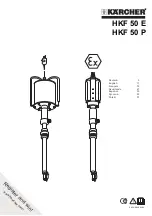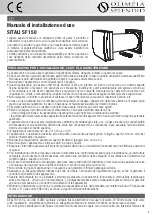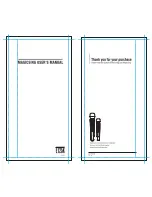
8
Piping
IMPORTANT NOTE:
To avoid possible unsatisfactory opera-
tion or equipment damage due to under firing of equipment,
do not undersize the natural/propane gas piping from the me-
ter/tank to the unit. When sizing a trunk line, include all appli-
ances on that line that could be operated simultaneously.
The rating plate is stamped with the model number, type of
gas and gas input rating. Make sure the unit is equipped to
operate on the type of gas available. The gas line installa-
tion must comply with local codes, or in the absence of local
codes, with the latest edition of the National Fuel Gas Code
NFPA 54/ANSI Z223.1.
Natural Gas Connection
Length of
Pipe in Feet
1/2
3/4
1
1 1/4
1 1/2
10
132
278
520
1050
1600
20
92
190
350
730
1100
30
73
152
285
590
980
40
63
130
245
500
760
50
56
115
215
440
670
60
50
105
195
400
610
70
46
96
180
370
560
80
43
90
170
350
530
90
40
84
160
320
490
100
38
79
150
305
460
Pressure = .50 PSIG or less and Pressure Drop of 0.3" W.C. (Based
on 0.60 Specific Gravity Gas)
Natural Gas Capacity of Pipe
in Cubic Feet of Gas Per Hour (CFH)
Nominal Black Pipe Size (inches)
Btuh Furnace Input
Calorific Value of Gas
BTUH Furnace Input
Heating Value of Gas (BTU/Cubic Foot)
CFH =
Refer to the Proper Piping Practice drawing for the general
layout at the unit. The following rules apply:
1. Use black iron pipe and fittings for the supply piping.
The use of a flex connector and/or copper piping
is permitted as long as it is in agreement with local
codes.
2. Use pipe joint compound on male threads only. Pipe
joint compound must be resistant to the action of the
fuel used.
3. Use ground joint unions.
4. Install a drip leg to trap dirt and moisture before it can
enter the gas valve. The drip leg must be a minimum
of three inches long.
5. Use two pipe wrenches when making connection to
the gas valve to keep it from turning.
6. Install a manual shut-off valve in a convenient location
(within six feet of unit) between the meter and the unit.
7. Tighten all joints securely.
8. The unit must be connected to the building piping by
one of the following methods:
• Rigid metallic pipe and fittings
• Semirigid metallic tubing and metallic fittings
(Aluminum alloy tubing must not be used in exterior
locations)
• Listed gas appliance connectors used in accordance
with the terms of their listing that are completely in
the same room as the equipment
• In the prior two methods above the connector or
tubing must be protected from physical and thermal
damage. Aluminum alloy tubing and connectors
must be coated to protect against external corrosion
when in contact with masonry, plaster or insulation
or are subject to repeated wettings by liquids (water
- not rain water, detergents or sewage)
DRIP LEG
MANUAL
SHUT-OFF
VALVE
GROUND JOINT UNION
(INSTALLED AHEAD OF GAS VALVE)
GROMMET
Proper Piping Practice
NOTE:
The unit gas supply entrance is factory sealed with
plugs. Keep plugs in place until gas supply is ready to be
installed. Once ready, replace the plugs with the supplied
grommets and install gas supply line.
Gas Piping Checks
CAUTION
To prevent property damage or personal injury due to fire,
the following instructions must be performed regarding gas
connections and pressure testing.
• The units and its gas connections must be leak tested
before placing in operation. Because of the danger of
explosion or fire, never use a match or open flame to test
for leaks. Never exceed specified pressures for testing.
Higher pressure may damage gas valve and cause overfiring
which may result in premature heat exchanger failure.
• This unit and its shut-off valve must be disconnected
from the gas supply during any pressure testing of that
system at pressures in excess of 1/2 PSIG (3.48 kPA).
• This unit must be isolated from the gas supply system by
closing its manual shut-off valve during any pressure
testing of the gas supply piping system at test pressures
equal to or less than 1/2 PSIG (3.48 kPA).
WARNING
To avoid property damage or personal injury, be sure there is
NO OPEN FLAME in the vicinity during air bleeding.
There will be air in the gas supply line after testing for leaks
on a new installation. Therefore, the air must be bled from
the line by loosening the ground joint union until pure gas is
expelled. Tighten union and wait for five minutes until all gas
has been dissipated in the air. Be certain there is no open
flame in the vicinity during air bleeding procedure. The unit is
placed in operation by closing the main electrical disconnect
switch for the unit.
Содержание APG 16 M Series
Страница 28: ...28 CFM OUTPUT AND DIP SWITCH SETTINGS...
Страница 31: ...31 THIS PAGE IS LEFT INTENTIONALLY BLANK...









































